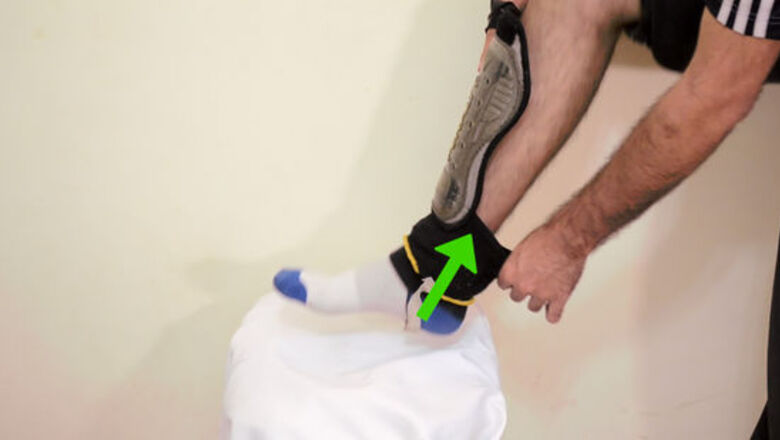
views
Wearing Your Shin Guards Properly
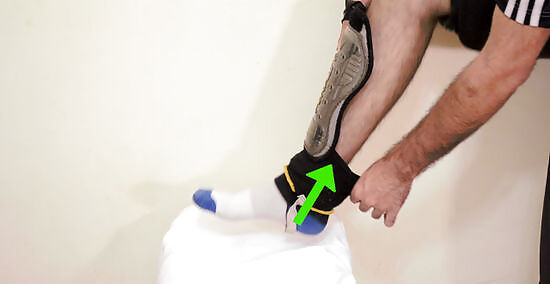
Slide the shin guards past your ankle and up your shin. This should be the first thing you put on. Shin guards are worn under the socks, so don't put them on yet.

Position the shin guards correctly. Make sure they are centered on your shin, not off to the side. They should protect from your ankle to below your knee. If your shin guards have ankle pads, they should cover the bony sections on both sides of your ankle. Be sure your shin guards are properly positioned before moving on, or you risk a serious injury.
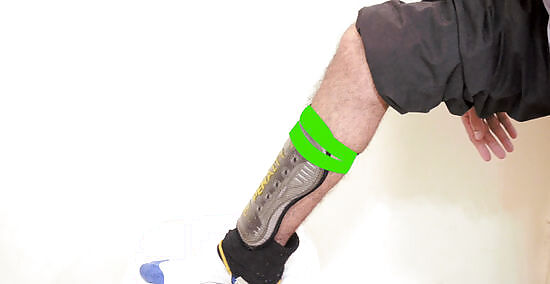
Fasten all straps securely. Most shin guards have straps at the top to secure the guard to your leg. Make sure that these are snug enough to keep your shin guard in place, but not so tight that they restrict your circulation. If your foot starts to itch, swell, feel numb or discolor, your shin guards are probably too tight. Loosen them right away to avoid injuring your leg.
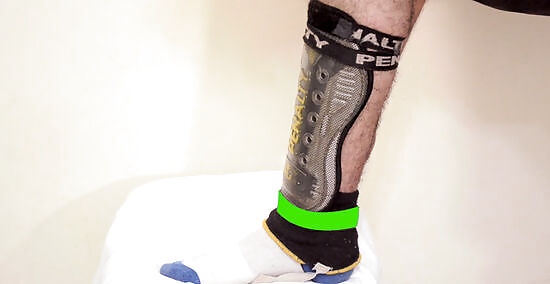
Tape your shin guards if necessary. Slip-in shin guards and shin guards without ankle pads usually need extra security to keep them in place. Even some shin guards with good straps fall out of place during intense games. Slip-in shin guards have no straps and usually have to be taped at both ends. Wrap athletic tape around the top and bottom of your shin guards. Test your shin guards and make sure they don't easily push up or down. If your shin guards have straps, you should still test them. Push them around and make sure they are secure on your leg. If they move around, you can tape them up just like slip-in shin guards. Keep extra tape with you during games. You may need to replace your tape during breaks or half time.
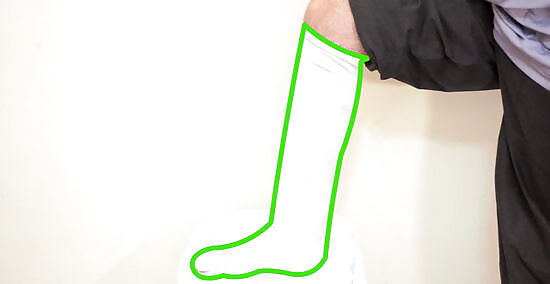
Put your sock over the shin guards. Your socks don't just cover your shin guards, but help keep them in place as well. You'll want a sock that is snug on your leg, but also not so tight that it cuts off your circulation. Pull your socks all the way up to make sure they're snug enough. If you have fabric left that stretches above your knee, roll it down to further secure your shin guards.
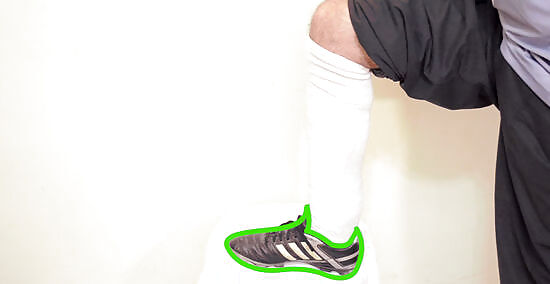
Put your cleats on. If your cleats are the right size for you, they should not get in the way of your shin guards.
Buying the Right Shin Guards

Measure your leg. An improperly fitting pair of shin guards can impede athletic performance. It can also be dangerous- shin guards that are too small won't fully cover your leg and leave you open to physical impact; shin guards that are too big can trip you and cause an injury. Therefore picking the right size is essential for good performance and safety. Measure from two inches below the knee to just above the bend of your ankle. This is the area that your shin guard should cover. The length of this measurement determines the ideal size for your shin guard.
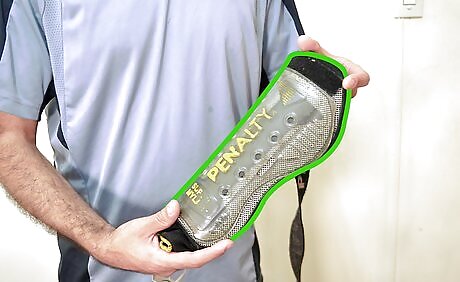
Choose the right style. There are two primary styles of shin guard. Each offers unique levels of protection and flexibility. Slip-in Shin Guards. These are usually a protective plate inside a compression sleeve. They slip over the shin like a large sock. This style offers a wider range of motion but less protection. It is usually recommended for more advanced players. Ankle shin guards. This style consists of a protective plate that straps around the shin attached to padding that wraps around the ankle. These are usually recommended for younger or less experienced players because they offer more protection.

Visit a sporting goods store and find the size and style you want. Stores like Modell's, Dicks, and Sports Authority are general sporting goods stores that have equipment for numerous sports. If you're an advanced player looking for a very specific type of shin guard, you may want to try a store that specializes in the sport you play. Using the measurement you took of your leg, find the right size and style shin guard. Shin guards can vary greatly in price. A general rule is that more expensive shin guards will offer better protection, but this isn't always true. Beginner players usually don't need the most expensive equipment, just adequate protection. A store employee should be able to talk you through your options and find the best pair of shin guards for the right price.

Try the shin guard on. Make sure your shin guard fits properly. Remember, the right size shin guard should cover from right above your ankle to about two inches below your knee. If your initial leg measurement was too big or small, find another pair that fits you better. Also walk around with the shin guards on. Make sure they're comfortable and don't inhibit your movement. You want good protection that still allows you to play effectively. Try walking and running with the shin guards on. They shouldn't get in the way or slow you down. Do the motions you would do while playing your sport. For example, if you play soccer, try kicking a ball. The shin guards shouldn't impede your kicking at all.
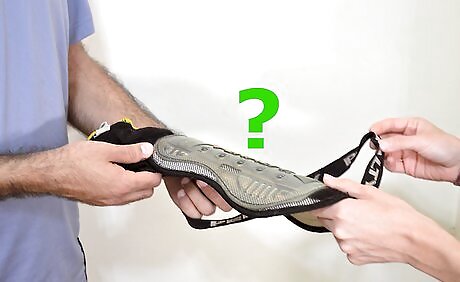
Ask a store employee if you have any problems. They can offer you tips and advice on the best pair of shin guards for you.
Caring for Your Shin Guards
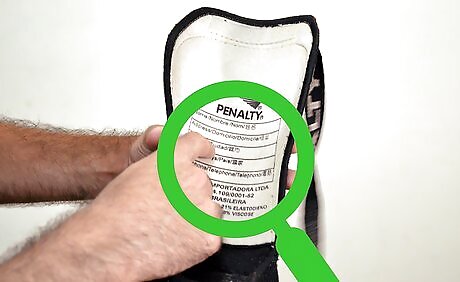
Read any cleaning instructions that come with your shin guards. Some kinds of shin guards have particular cleaning demands and can get ruined if you don't follow directions. If your shin guards don't have any restrictions, you can follow these steps to keep your shin guards clean and infection-free. How often you should wash your shin guards is really a matter of how often you use them. If you use them on a regular basis, cleaning at least once a month will be necessary to fight odor and bacteria buildup.

Dry out shin guards after use. Sweat buildup on shin guards is not only unsanitary, but can damage them over time. Instead of leaving them in your athletic bag after a game or practice, leave them out to dry.
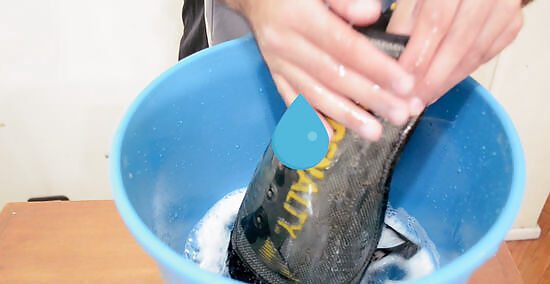
Scrub your shin guards with soap and warm water. Athletic equipment is a breeding ground for bacteria, which can cause a serious infection if you get cut. Soap and water will help kill any bacteria that might be colonizing your shin guards and protect you from infection.
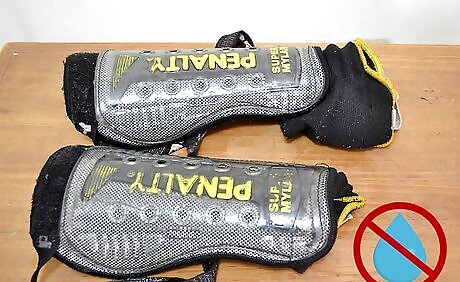
Allow your shin guards to dry completely before using them again. Leaving them outside in the sun should dry them up quickly.

Sprinkle baking soda in your shin guards to fight odor. You'll probably notice that after just a few uses, your shin guards start to smell like sweat. After your shin guards are dry, add some baking soda to help fight unpleasant odor.
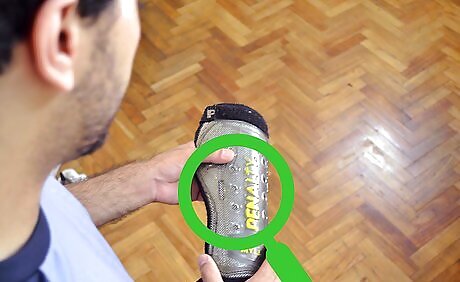
Inspect your shin guards regularly for cracks or other damage. A damaged pair of shin guards will not only offer poor protection, but can hurt you. If they break while you're using them, the plastic can cause a bad cut. If you find any cracks in your shin guards, it's time to replace them.


















Comments
0 comment